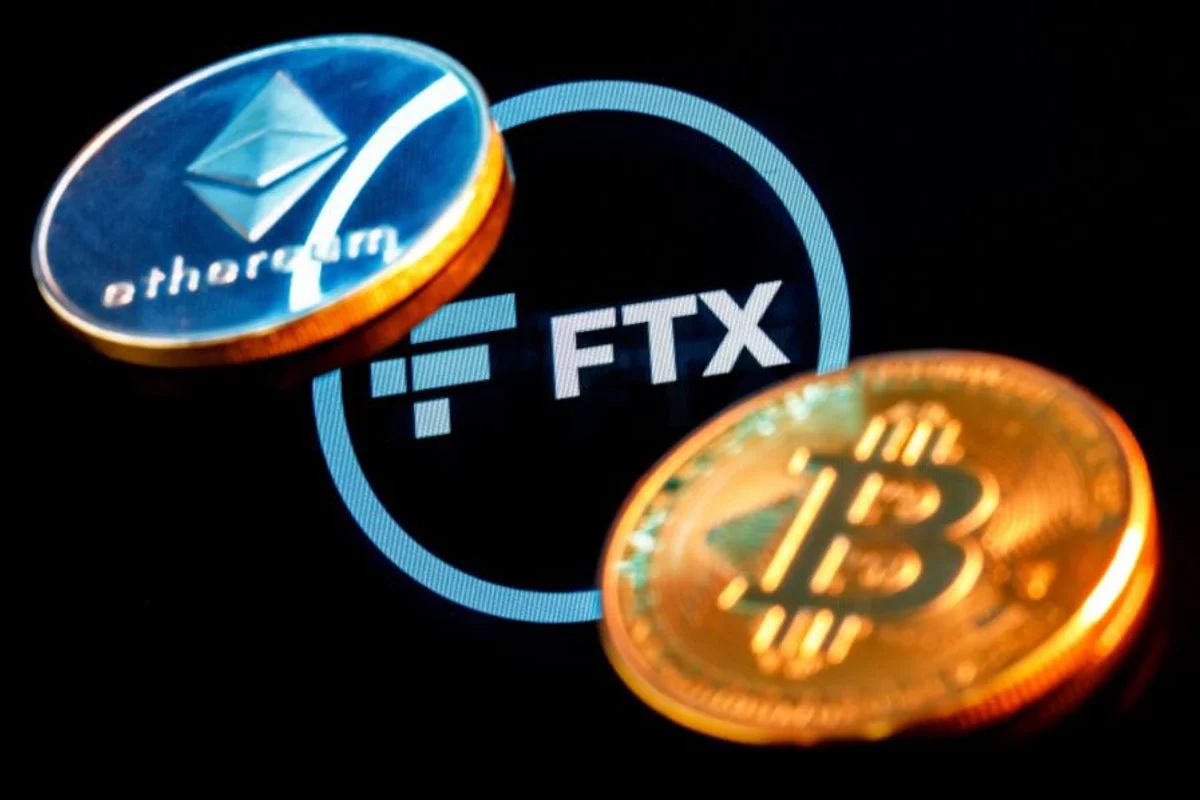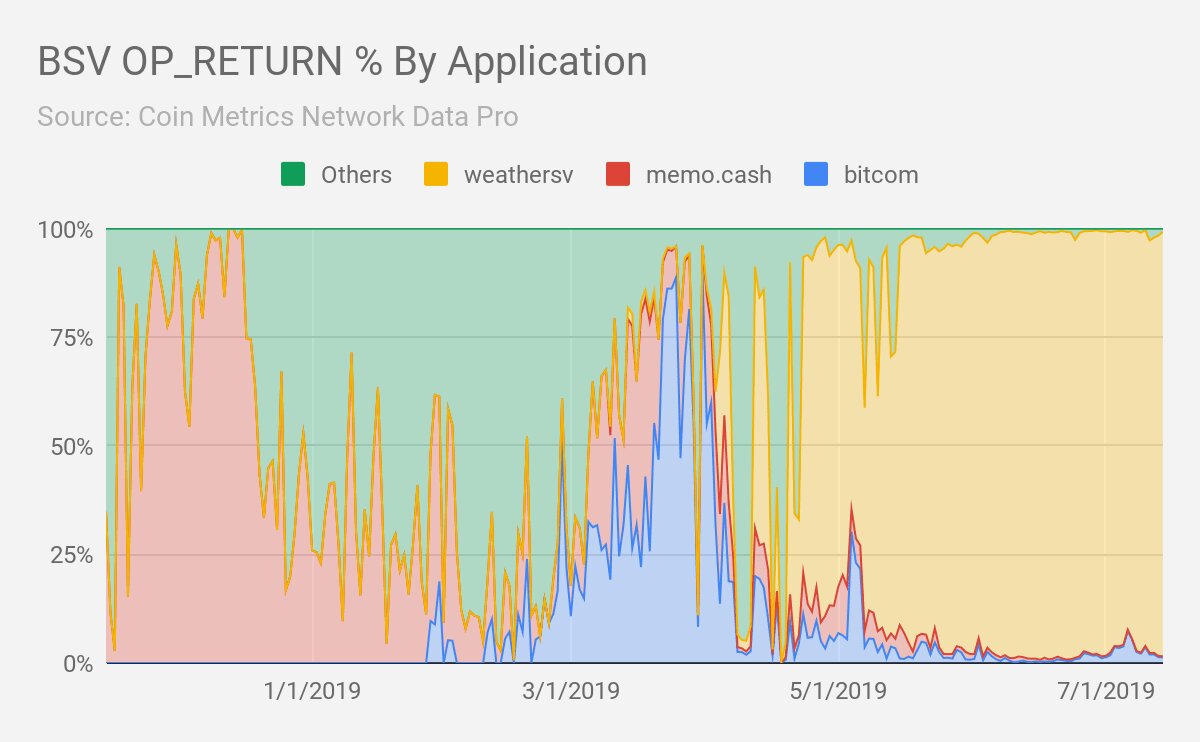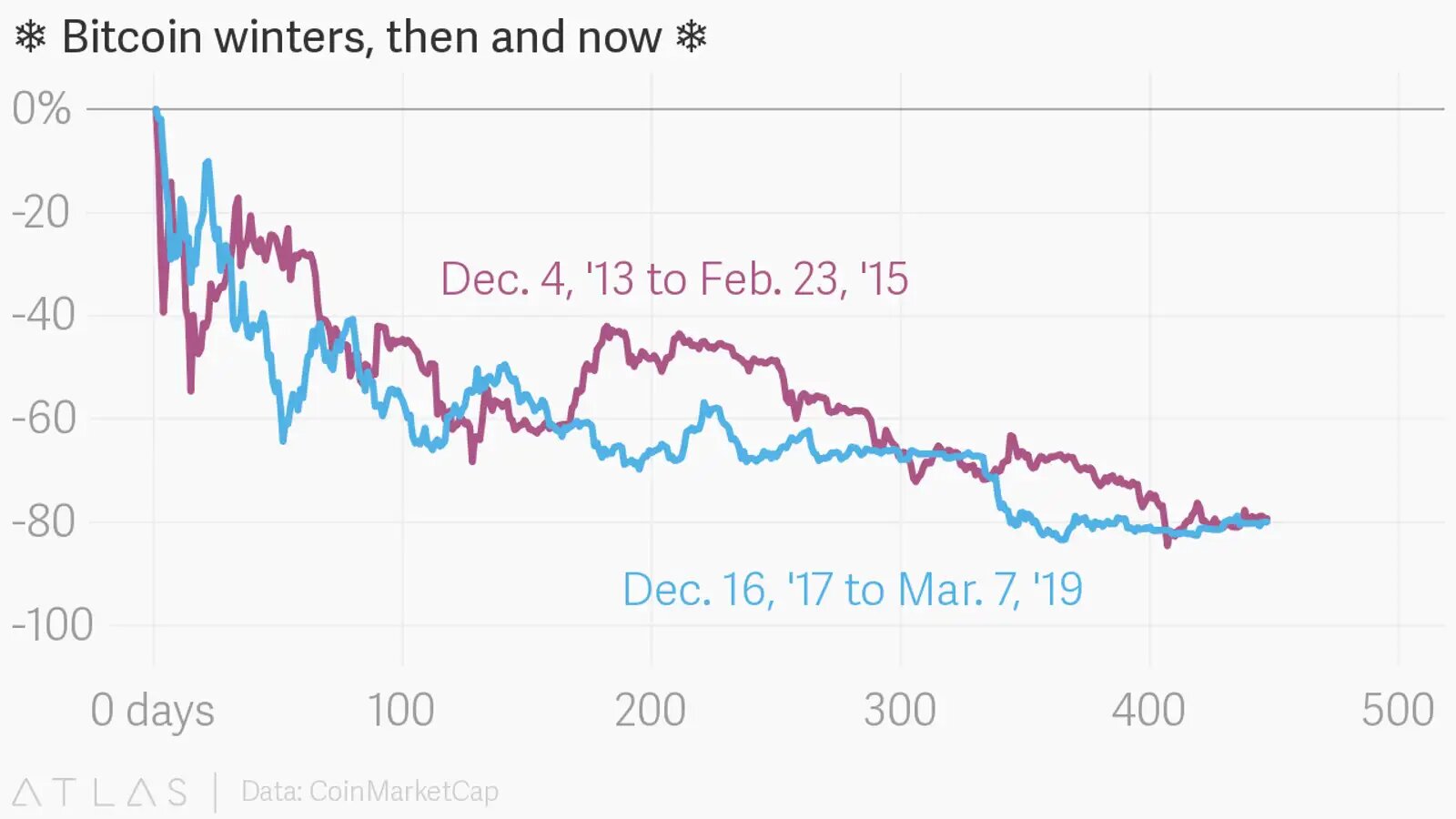Introduction
Over the past decade, cryptocurrencies have taken the financial world by storm. Bitcoin, Ethereum, and other digital currencies have seen tremendous growth and attracted millions of investors looking to capitalize on the potential profits. However, along with the booming popularity of crypto, the market has also experienced periods of significant volatility and crashes.
Crypto crashing refers to the sudden and significant drop in the value of cryptocurrencies, often resulting in substantial losses for investors. These crashes can occur due to a combination of factors, including speculation, lack of regulations, security breaches, and government interventions. The impact of crypto crashes extends beyond individual investors, affecting the overall stability of financial markets and the public’s trust in digital currencies.
While the decentralization and anonymity that cryptocurrencies offer have been appealing to many, the absence of proper regulations has created an environment susceptible to market manipulation and fraudulent activities. The lack of oversight also means that investors are often left unprotected, leading to increased volatility and susceptibility to crashes.
Moreover, the speculative nature of the cryptocurrency market exacerbates its volatility. Market participants driven by fear of missing out (FOMO) or the desire for quick profits often contribute to rapid price fluctuations. This speculative behavior further amplifies the risk of crashes and financial instability.
In addition, the cryptocurrency industry has been plagued by frequent security breaches and hacking incidents. These incidents not only result in significant financial losses for affected individuals and exchanges but also erode public confidence in the safety and security of cryptocurrencies.
Furthermore, governments worldwide have started to take notice of the potential risks associated with cryptocurrencies. Regulatory actions, such as banning initial coin offerings (ICOs) or implementing strict Know Your Customer (KYC) and anti-money laundering (AML) requirements, have contributed to market instability and uncertainty, leading to further crypto crashes.
The impact of crypto crashes goes beyond the financial losses incurred by individual investors. They can also lead to a decline in public trust and adoption. If potential investors perceive cryptocurrencies as too risky or volatile, they may shy away from entering the market, hindering its growth potential.
As crypto crashes continue to occur, it is crucial for regulators to play a proactive role in preventing future incidents. By implementing stricter regulations, monitoring market manipulation, and educating investors about the risks involved, regulators can foster a more stable and trustworthy environment for the cryptocurrency market.
In the following sections, we will delve deeper into the reasons for crypto crashes, the impact they have, and the measures regulators can take to mitigate these risks and ensure the long-term sustainability of the cryptocurrency market.
What is Crypto Crashing?
Crypto crashing refers to the sudden and significant decline in the value of cryptocurrencies within a short period. It can be characterized by a rapid drop in prices, often resulting in substantial financial losses for investors and market participants.
Cryptocurrencies, such as Bitcoin, Ethereum, and Litecoin, operate on a decentralized digital ledger technology called the blockchain. Unlike traditional fiat currencies that are regulated by governments and central banks, cryptocurrencies are not backed by any physical assets or governing bodies. Their value is primarily driven by supply and demand dynamics and market sentiment.
The volatile nature of the cryptocurrency market makes it prone to frequent price fluctuations. However, a crypto crash is a more significant and sudden decline in prices that goes beyond normal market volatility. It can be triggered by various factors, including market speculation, lack of regulations, security breaches, and government interventions.
During a crypto crash, panic selling occurs as investors rush to liquidate their positions to cut their losses or protect their remaining capital. This mass selling activity leads to a steep decline in prices, further fueling the downward spiral.
It is worth noting that crypto crashes are not isolated incidents. The cryptocurrency market has experienced several significant crashes in its relatively short history. The most notable crash occurred in late 2017 and early 2018 when the prices of many cryptocurrencies plummeted after reaching all-time highs. This crash, often referred to as the “crypto bubble burst,” resulted in substantial financial losses for numerous investors.
Understanding the nature and causes of crypto crashing is crucial for investors, regulators, and market participants. By identifying the factors that contribute to these crashes, steps can be taken to prevent or mitigate their impact in the future.
In the next sections, we will explore the reasons behind crypto crashes, such as the lack of regulations, market speculation, security breaches, and government actions. We will also examine the consequences of these crashes and discuss how regulators can work towards preventing their occurrence and ensuring a more stable cryptocurrency market.
Reasons for Crypto Crashing
The cryptocurrency market is known for its inherent volatility, with prices fluctuating rapidly and sometimes experiencing significant crashes. These crashes can have a range of causes, including:
- Lack of Regulations: One of the key factors contributing to crypto crashing is the absence of robust regulations. While the decentralized nature of cryptocurrencies is appealing, it also leaves the market vulnerable to manipulation and fraudulent activities. Without proper oversight, malicious actors can take advantage of loopholes and engage in market manipulation, leading to instabilities and crashes.
- Increase in Market Speculation: The speculative nature of the cryptocurrency market amplifies the risk of crashes. When investors are driven by the fear of missing out (FOMO) or the desire for quick profits, they contribute to rapid price increases. However, once market sentiment shifts, panic selling can ensue, causing prices to plummet. The high levels of speculation and herd mentality make the market more susceptible to crashes.
- Hacks and Security Breaches: Crypto exchanges and wallets have become prime targets for hackers due to the potential for significant financial gains. Security breaches and thefts have occurred in the past, leading to substantial losses for investors and eroding trust in the security of cryptocurrencies. When such incidents unfold, it can trigger a sense of panic among investors, leading to mass selloffs and price crashes.
- Government Crackdowns: Governments worldwide have started to impose regulations on cryptocurrencies to address concerns such as money laundering, terrorist financing, and investor protection. However, sudden changes in regulatory policies or outright bans can create uncertainty and volatility in the market, causing crashes. Government intervention, whether through restrictive measures or crackdowns on crypto-related activities, can significantly impact the market’s stability and investor sentiment.
These factors, individually or in combination, can lead to abrupt market downturns and crypto crashes. It is essential to acknowledge that the volatile nature of cryptocurrencies makes the market inherently susceptible to price fluctuations. While crashes are an inherent risk, understanding the underlying reasons behind them can help investors, regulators, and market participants navigate the market more effectively.
In the following sections, we will explore the impact of crypto crashes and discuss the measures regulators can take to mitigate these risks and ensure the long-term stability and sustainability of the cryptocurrency market.
Lack of Regulations
One of the significant reasons behind crypto crashing is the lack of comprehensive regulations governing the cryptocurrency market. While decentralization and the absence of a central authority are core principles of cryptocurrencies, the lack of oversight and regulation has created an environment prone to manipulation, fraud, and instability.
Without proper regulations, the cryptocurrency market lacks the necessary safeguards to ensure fair and transparent trading practices. This absence of oversight opens the door for malicious actors to engage in market manipulation, pump-and-dump schemes, and other fraudulent activities that can lead to crashes.
Moreover, the absence of regulations leaves investors vulnerable to various risks. The lack of legal protections makes it difficult for investors to seek recourse in cases of fraud, theft, or market manipulation. This loss of trust can lead to a decline in investor confidence and ultimately trigger sell-offs, exacerbating the impact of a crash.
Another consequence of the lack of regulations is the prevalence of unregulated and unauthorized exchanges. These platforms, often operating in jurisdictions with loose or no regulations, pose a significant risk to investors. They may lack security measures or even engage in fraudulent practices, contributing to market instability and increasing the likelihood of crashes.
Moreover, the absence of robust regulations makes it challenging to establish standards for security practices and custody of digital assets. The increasing frequency of hacking incidents and the resulting loss of funds highlight the need for regulations that ensure adequate security measures are implemented by market participants.
To address the issue of the lack of regulations, various jurisdictions have started implementing measures to oversee and regulate the cryptocurrency market. These include imposing Know Your Customer (KYC) and anti-money laundering (AML) requirements, establishing licensing frameworks for crypto exchanges, and introducing investor protection mechanisms.
By implementing appropriate regulations, governments can help promote market transparency, deter fraudulent activities, and protect investors. Regulatory oversight can create a more secure and stable environment for the cryptocurrency market, reducing the likelihood of crashes caused by market manipulation, fraud, and unauthorized activities.
In the next sections, we will discuss other reasons for crypto crashes, such as market speculation, security breaches, and government crackdowns. Additionally, we will explore the impact of these crashes on investors and the broader financial ecosystem, as well as the role regulators can play in preventing future crashes and fostering a more stable cryptocurrency market.
Increase in Market Speculation
Market speculation plays a significant role in driving the volatility of the cryptocurrency market. The desire for quick profits and the fear of missing out (FOMO) lead to increased speculation and contribute to the risk of market crashes.
One of the key factors behind the increase in market speculation is the potential for substantial returns. The rapid price appreciation of cryptocurrencies, especially during bull markets, attracts investors looking to capitalize on the upward momentum. However, this speculative behavior can lead to inflated prices that are not necessarily reflective of the actual value or utility of the digital assets.
Speculative trading can create a feedback loop, where the fear of missing out leads to increased buying activity, driving prices higher. As prices continue to rise, more investors are drawn into the market, hoping to ride the wave of profits. This speculative frenzy can create a bubble-like scenario where prices become disconnected from the fundamental value of the cryptocurrencies.
However, when market sentiment shifts or negative news surfaces, it can trigger panic selling among speculative investors. This mass selling pressure leads to a sudden and significant drop in prices, resulting in a crash. The rapid decline in prices can be exacerbated by automated trading algorithms and high-frequency trading, amplifying the impact of the sell-off.
Moreover, the lack of regulation and oversight in the cryptocurrency market makes it easier for speculative activities to occur. With limited restrictions, investors can freely engage in risky trading strategies, such as margin trading or high-leverage trading, which further contribute to market volatility and the risk of crashes.
Another factor fueling market speculation is the pervasive influence of social media and online communities. Cryptocurrency enthusiasts and influencers often promote certain coins or projects, creating hype and increasing the likelihood of speculative buying. This herd mentality can result in price bubbles and, subsequently, crashes when the hype subsides.
To address the issue of increased market speculation, regulators can play a crucial role. By implementing measures to increase transparency and accountability, such as requiring accurate and timely disclosure of information, regulators can foster a more informed investment environment. Educating investors about the risks of speculative trading and promoting responsible investment practices can also help mitigate the impact of market speculation and reduce the likelihood of crashes.
In the next sections, we will explore other reasons for crypto crashes, including security breaches, government crackdowns, and the impact that these crashes have on investors and the cryptocurrency market. We will also discuss the role of regulators in preventing future crashes and fostering a more stable and sustainable cryptocurrency market.
Hacks and Security Breaches
Hacks and security breaches represent a significant risk in the cryptocurrency market, often leading to substantial financial losses for investors and contributing to market crashes. The decentralized nature of cryptocurrencies and the prevalence of digital exchanges and wallets make them attractive targets for hackers.
Despite advancements in cybersecurity measures, the cryptocurrency industry continues to face persistent security challenges. Hackers employ various strategies to exploit vulnerabilities and gain unauthorized access to digital assets. Once successful, they can steal funds from individual accounts, compromise exchanges, or manipulate the market, leading to cascading effects.
Security breaches can occur in different ways. Some hackers use sophisticated techniques, such as exploiting software vulnerabilities or conducting phishing attacks to trick users into revealing their private keys or login credentials. Others target exchanges, taking advantage of weak security protocols or insider threats to gain access to large amounts of funds.
When a security breach occurs, it can have severe consequences. The immediate impact is the loss of funds for affected individuals or exchanges, often running into millions or even billions of dollars. These losses can have a domino effect, leading to a loss of investor confidence and triggering panic-selling, which further drives down prices.
Furthermore, security breaches erode public trust in the safety and security of cryptocurrencies. Potential investors may view the market as risky and unpredictable, resulting in reduced adoption rates. This lack of trust impedes the growth and acceptance of cryptocurrencies as a viable form of payment or investment vehicle.
To mitigate the risk of hacks and security breaches, stringent security measures are necessary. This includes implementing robust encryption protocols, utilizing multi-factor authentication, conducting regular security audits, and educating users about best practices for safeguarding their digital assets.
Regulators can also play a role in ensuring the security of the cryptocurrency market. By imposing standards and requirements for exchanges and wallet providers, regulators can enforce minimum security protocols and hold market participants accountable for protecting user funds. Additionally, collaboration between industry players, security experts, and regulators can help identify and address emerging threats.
Overall, the frequency and severity of hacks and security breaches highlight the importance of prioritizing security measures in the cryptocurrency industry. By enhancing security protocols and establishing regulatory frameworks that promote best practices, the risk of security breaches can be reduced, leading to a more stable and secure environment for investors.
In the next sections, we will examine other reasons for crypto crashes, including government crackdowns, the impact of crashes on investors and the broader financial ecosystem, and the role of regulators in preventing future crashes and fostering a more resilient cryptocurrency market.
Government Crackdowns
Government interventions and regulatory actions can have a significant impact on the cryptocurrency market, leading to increased volatility and even crashes. Governments worldwide have taken various approaches towards cryptocurrencies, ranging from embracing innovation to imposing strict regulations or outright bans.
One reason for government crackdowns is the concern over illicit activities, such as money laundering, terrorist financing, and tax evasion. Cryptocurrencies’ pseudonymous nature has raised red flags for regulators who seek to protect financial systems and prevent illegal activities. In response, regulators have implemented Know Your Customer (KYC) and Anti-Money Laundering (AML) requirements to increase transparency and accountability.
Government crackdowns can have a destabilizing effect on the cryptocurrency market. When announcements of stricter regulations or bans are made, investor sentiment may turn negative, leading to panic-selling and significant price declines. This knee-jerk reaction can trigger a cascade of sell-offs, resulting in a crash.
Moreover, regulatory uncertainty adds another layer of risk to the cryptocurrency market. Frequent changes in regulations or unclear guidelines create ambiguity and hinder the growth and development of the market. Investors may become hesitant to participate in the market, fearing potential retroactive regulations or the risk of non-compliance.
However, it is important to note that not all government actions negatively impact the market. Some regulatory measures can provide a sense of legitimacy and stability to the cryptocurrency industry. Governments that create clear regulatory frameworks, establish licensing requirements, and promote investor protection contribute to a healthier and more trustworthy market environment.
Government crackdowns can also stimulate the development of regulatory technology (RegTech) solutions. Regulators and industry participants collaborate to develop innovative tools and platforms that facilitate compliance with regulations, enhance market surveillance capabilities, and detect fraudulent activities. These efforts contribute to a safer and more secure cryptocurrency market.
Collaboration between governments and international regulatory bodies is crucial in addressing the global nature of cryptocurrencies. By working together, regulators can establish harmonized guidelines and promote cross-border cooperation to prevent regulatory arbitrage and ensure consistent market oversight.
As the cryptocurrency market continues to evolve, it is essential for governments to strike a balance between protecting the financial system and fostering innovation. Regulatory actions should aim to mitigate risks, provide legal clarity, and create a framework that supports sustainable growth. Effective regulation can provide stability and confidence in the cryptocurrency market, reducing the likelihood of crashes.
In the next sections, we will explore the impact of crypto crashes on investors and the broader financial ecosystem, as well as the role of regulators in preventing future crashes and fostering a more stable and sustainable cryptocurrency market.
Impact of Crypto Crashing
Crypto crashing can have far-reaching consequences, impacting investors, the broader financial ecosystem, and the perception of cryptocurrencies as a viable investment option. Understanding these impacts is crucial to grasp the significance of market crashes and the importance of mitigating their occurrence.
Investor Losses and Financial Instability: Crypto crashes often lead to substantial financial losses for individual investors. Those who bought digital assets at high prices may face significant devaluations, resulting in financial distress. Moreover, the panic selling triggered by crashes can exacerbate the downward pressure on prices, amplifying the losses suffered by investors. These financial losses can have adverse effects on personal finances and even contribute to market-wide financial instability.
Decreased Trust and Adoption: Repeated crypto crashes erode public trust in cryptocurrencies as a reliable investment option. The high volatility and unpredictability associated with market crashes create a sense of insecurity among potential investors. This loss of trust can lead individuals and institutions to shy away from the market and hinder the widespread adoption of cryptocurrencies as a means of payment or investment.
Rise of Alternative Investment Options: When crypto crashes occur, investors may redirect their funds towards alternative investment options that are perceived as more stable or less volatile. Traditional assets like stocks, bonds, or commodities may benefit from the market uncertainty surrounding cryptocurrencies. This shift in investment preferences can impact the overall demand and liquidity of the crypto market, further contributing to its instability.
The Role of Regulators in Preventing Future Crashes: Given the impact of crypto crashing, regulators play a crucial role in fostering a more stable and sustainable cryptocurrency market. By implementing stricter regulations, regulators can enhance market transparency, protect investors from fraud, and mitigate risks associated with market manipulation. Educating investors about the volatility and risks inherent in cryptocurrencies can also help set realistic expectations and reduce the likelihood of panic-induced sell-offs during market downturns.
Implementing Stricter Regulations: Regulators can introduce measures to ensure that market participants adhere to compliance standards, such as KYC and AML requirements. Strengthening regulations around exchanges and wallets can enhance security and protect investors’ funds from malicious actors. Transparent reporting and disclosure practices can also increase market transparency, aiding informed decision-making.
Monitoring and Regulating Market Manipulation: Regulators can establish robust surveillance systems to detect and prevent market manipulation, such as pump-and-dump schemes or manipulative trading practices. By actively monitoring the market and taking swift action against fraudulent activities, regulators can maintain market integrity and minimize the risk of crashes caused by manipulative behavior.
Educating Investors about the Risks and Volatility of Crypto: Regulators can collaborate with industry stakeholders to educate investors about the risks associated with crypto investments. Promoting financial literacy and providing clear guidelines on risk management can help investors make informed decisions and reduce the likelihood of panic selling during market downturns.
Collaborating with International Regulators for a Unified Approach: The global nature of cryptocurrencies necessitates collaboration among regulators worldwide. By sharing information, exchanging best practices, and harmonizing regulations, regulators can work together to create a consistent and coordinated approach to oversee the cryptocurrency market. Such collaboration can reduce regulatory arbitrage and enhance market stability.
The impact of crypto crashing extends beyond individual investors, affecting financial stability, investor trust, and the wider adoption of cryptocurrencies. By understanding these impacts and implementing effective regulatory measures, stakeholders can work towards preventing future crashes and fostering a more stable and sustainable cryptocurrency market.
Investor Losses and Financial Instability
One of the significant consequences of crypto crashing is the financial losses incurred by individual investors. These crashes can result in substantial devaluations of their digital assets, leading to significant financial distress. Investors who bought cryptocurrencies at high prices may find themselves facing substantial losses when prices plummet during crashes.
The rapid and significant decline in cryptocurrency prices can exacerbate the losses suffered by investors. Panic selling triggered by crashes intensifies the downward pressure on prices, creating a domino effect. As more investors rush to sell their holdings to limit their losses or protect their remaining capital, the market experiences a flood of sell orders, further driving down prices.
These investor losses can have broader implications for financial stability, especially when the cryptocurrency market is interconnected with the traditional financial system. Crypto crashes can lead to financial instability, with ripple effects that impact other sectors of the economy.
When investors incur significant losses, they may experience financial hardship, reducing their spending power and ability to contribute to economic growth. This contraction in consumer spending can disrupt overall economic stability.
Moreover, if a large number of investors face substantial losses, it can affect their ability to meet loan obligations, potentially leading to a rise in default rates. Financial institutions that have exposure to cryptocurrency investments may suffer losses or face liquidity constraints, further contributing to financial instability.
Additionally, crypto crashes may impact investment portfolios and institutional investors. If cryptocurrencies are included in investment portfolios, significant price declines can affect the overall performance and stability of the portfolio. This can have spillover effects on institutional investors such as hedge funds, pension funds, or mutual funds, potentially impacting their financial health and stability.
The financial instability caused by crypto crashes can reverberate beyond the cryptocurrency market, affecting the overall confidence in the global financial system. Heightened volatility and uncertainty can lead to a risk-off sentiment, where investors seek safer, more stable assets, potentially causing capital flight from riskier investments.
Regulators play a crucial role in mitigating investor losses and ensuring financial stability. By implementing effective regulations, they can promote market transparency, combat fraudulent activities, and provide mechanisms for investor protection. Regulators can also work to ensure that sufficient safeguards are in place to address systemic risks and maintain the overall integrity of the financial system.
Market participants should also exercise caution and conduct thorough due diligence before investing in cryptocurrencies. Understanding the risks, volatility, and potential for crashes can help investors make informed decisions and manage their exposure to the market. Diversification of investment portfolios and rigorous risk management practices can also help mitigate the impact of crashes.
By addressing investor losses and promoting financial stability, regulators and market participants can work together towards building a more robust and resilient cryptocurrency market.
Decreased Trust and Adoption
Crypto crashing and the resulting market volatility can have a significant impact on the trust and adoption of cryptocurrencies. When crashes occur, and investors experience substantial financial losses, it creates a sense of insecurity and erodes trust in the market.
One of the main reasons for decreased trust is the unpredictability of cryptocurrency prices. The high levels of volatility and the potential for rapid and significant price swings create an environment of uncertainty for investors. This uncertainty can make potential investors hesitant to enter the market or view cryptocurrencies as too risky for long-term investment.
Furthermore, repeated crashes can lead to a loss of confidence in the stability and reliability of cryptocurrencies as a medium of exchange or a store of value. If the market is perceived as unreliable or prone to frequent crashes, individuals and businesses may be reluctant to adopt cryptocurrencies for everyday transactions.
Trust is also affected by the prevalence of fraudulent activities and scams in the cryptocurrency space. While the technology underlying cryptocurrencies is secure, the lack of regulation has allowed malicious actors to take advantage of unsuspecting investors. High-profile cases of exchange hacks and Ponzi schemes have further tarnished the reputation of cryptocurrencies, reducing trust in the market.
Decreased trust has a direct impact on the adoption of cryptocurrencies. If potential investors perceive cryptocurrencies as too risky or volatile, they may choose not to invest or participate in the market. This hinders the widespread adoption of digital currencies as a means of payment or investment, limiting their potential to disrupt traditional financial systems.
Regulatory measures can play a crucial role in rebuilding trust and fostering increased adoption of cryptocurrencies. By implementing strict regulations and oversight, regulators can provide a level of protection and reassurance for investors. Clear guidelines, licensing requirements, and investor protection mechanisms can help establish a more secure and trustworthy environment.
Education also plays a fundamental role in increasing trust and adoption. Providing accurate information about the risks, benefits, and potential use cases of cryptocurrencies can help potential investors make informed decisions. Educational initiatives can also address misconceptions and promote responsible investing practices, further enhancing trust in the market.
Furthermore, technological advancements such as improved security measures and decentralized platforms can contribute to rebuilding trust. Implementing robust security protocols, conducting rigorous audits, and enhancing transparency can go a long way in demonstrating the safety and reliability of cryptocurrencies.
Ultimately, building trust and increasing adoption requires a combined effort from regulators, industry participants, and the broader cryptocurrency community. By addressing concerns, implementing necessary regulations, and promoting educational initiatives, stakeholders can work towards fostering trust, stability, and wider acceptance of cryptocurrencies.</p
Rise of Alternative Investment Options
During periods of crypto crashing, investors may seek alternative investment options that are perceived as more stable or less volatile. The uncertainty and risks associated with cryptocurrency market crashes prompt individuals and institutions to diversify their portfolios and explore other investment avenues.
One of the primary beneficiaries of crypto crashes is the traditional financial market. Investors may redirect their funds towards more established assets such as stocks, bonds, or commodities. These traditional assets are often perceived as less volatile and offer greater familiarity and historical track records, providing a sense of stability during times of market turbulence.
Furthermore, the decline in cryptocurrency prices may prompt investors to reconsider their risk appetite and reallocate their investments to lower-risk assets. Instead of exposing their capital to the unpredictable and volatile nature of cryptocurrencies, investors may opt for investments that offer more predictable returns and lower downside risks.
Crashes in the cryptocurrency market can also divert attention and capital to other emerging investment opportunities. For instance, investors may turn to the rapidly growing blockchain technology sector, investing in companies that develop blockchain solutions or engage in cryptocurrency-related services. This shift in focus and investment allocation can drive innovation and development in other areas of the broader financial ecosystem.
Moreover, the increased availability and accessibility of investment options, such as exchange-traded funds (ETFs) and mutual funds, provide investors with diversified portfolios across different asset classes. These vehicles offer exposure to various investment opportunities while providing risk mitigation through diversification. The existence of such investment options allows investors to broaden their portfolios beyond cryptocurrencies and navigate market crashes more effectively.
As alternative investment options gain popularity, they may generate positive momentum and attract institutional investors who may have been cautious about participating in the cryptocurrency market. The entrance of institutional investors can bring additional liquidity, stability, and long-term capital to the alternative investment space, diversifying the investment landscape and reducing vulnerability to crypto crashes.
The rise of alternative investment options also highlights the need for regulators and market participants to adapt to evolving investor preferences. Establishing regulations and best practices for emerging investment vehicles, such as ETFs and mutual funds tied to cryptocurrencies or blockchain technology, can provide the necessary oversight and investor protection to ensure market integrity and promote investor confidence.
Overall, the rise of alternative investment options during crypto crashing demonstrates the flexibility of investors to navigate through market volatility. By exploring alternatives beyond cryptocurrencies, investors can diversify their portfolios, mitigate risks, and adapt to changing market conditions. The availability of diverse investment opportunities fosters a resilient financial ecosystem, capable of withstanding crypto crashes and providing investors with more stable and reliable investment avenues.
The Role of Regulators in Preventing Future Crashes
Regulators play a crucial role in preventing future crashes and fostering a more stable and sustainable cryptocurrency market. By implementing effective regulatory measures, regulators can address the underlying factors that contribute to market volatility and instability.
Implementing Stricter Regulations: Regulators can introduce and enforce stricter regulations to increase transparency and accountability in the cryptocurrency market. This includes imposing Know Your Customer (KYC) and Anti-Money Laundering (AML) requirements on market participants, ensuring compliance with reporting and disclosure standards, and establishing licensing frameworks for exchanges and other service providers. These regulations can provide a framework that promotes investor protection and reduces the likelihood of market manipulation or fraudulent activities.
Monitoring and Regulating Market Manipulation: Regulators can actively monitor the cryptocurrency market to detect and prevent market manipulation practices that contribute to crashes. By monitoring trading activities, investigating suspicious trading patterns, and taking timely enforcement actions, regulators can maintain market integrity and ensure fair trading practices. Regulators can implement surveillance mechanisms, including the use of advanced technologies and data analytics, to identify irregularities and combat market manipulation effectively.
Educating Investors about the Risks and Volatility of Crypto: Regulators have a responsibility to educate investors about the risks associated with investing in cryptocurrencies. By providing clear and accurate information about the volatility, speculation, and potential for crashes, regulators can help investors make informed decisions. Educational initiatives can include public awareness campaigns, investor guides, and collaboration with industry stakeholders to promote responsible investing practices. By promoting financial literacy, regulators can empower investors to navigate the cryptocurrency market more effectively and reduce the likelihood of panic-selling during market downturns.
Collaborating with International Regulators for a Unified Approach: Given the global nature of cryptocurrencies, collaboration between regulators on an international scale is essential. By sharing information, exchanging best practices, and harmonizing regulations, regulators can establish a consistent approach to oversee the cryptocurrency market. This collaboration can help prevent regulatory arbitrage, where market participants seek jurisdictions with weak or lenient regulations, and promote a level playing field for investors and market participants.
Regulators also need to strike a balance between protecting investors and fostering innovation. While regulations are necessary to ensure market integrity and investor protection, overly restrictive regulations can stifle innovation and drive legitimate businesses out of the market. Regulators must adopt a flexible and adaptive regulatory approach that allows for innovation while mitigating risks and maintaining market stability.
Ultimately, the role of regulators in preventing future crashes is to establish a regulatory framework that promotes transparency, accountability, and investor protection. A well-regulated market inspires trust and confidence among investors, reducing the likelihood of market manipulation and fraudulent activities. By actively monitoring the market, implementing appropriate regulations, and educating investors, regulators can contribute to the long-term stability and sustainability of the cryptocurrency market.
Implementing Stricter Regulations
Implementing stricter regulations is an essential step that regulators can take to enhance the stability and integrity of the cryptocurrency market. By imposing comprehensive regulations, regulators can address existing vulnerabilities and mitigate the risks that contribute to market volatility and crashes.
Licensing and Registration Requirements: Regulators can establish licensing frameworks for cryptocurrency exchanges, wallet providers, and other market participants. These frameworks can ensure that only qualified and reputable entities operate in the market. By requiring entities to meet specific criteria, such as demonstrating adequate security measures and financial stability, regulators can enhance market trust and reduce the risk of fraudulent activities.
Know Your Customer (KYC) and Anti-Money Laundering (AML) Requirements: Requiring market participants to implement robust KYC and AML procedures can help prevent money laundering, terrorist financing, and other illicit activities. By collecting necessary identification and verifying customer information, regulators can enhance the transparency and accountability of transactions, reinforcing the integrity of the cryptocurrency market.
Reporting and Disclosure Standards: Regulators can establish reporting and disclosure requirements for cryptocurrency projects, initial coin offerings (ICOs), and digital asset offerings. Clear guidelines on the information that needs to be disclosed, including financial statements and project details, can facilitate informed investment decisions and reduce the risk of scams or misleading information. Transparent reporting can also deter market manipulation and enhance market efficiency.
Regulating Market Manipulation: Strict regulations can help prevent market manipulation practices that contribute to crashes. Regulators can proactively monitor trading activities, detect irregularities, and take enforcement actions against manipulative behaviors such as insider trading, spoofing, and pump-and-dump schemes. By establishing surveillance mechanisms and adopting technological solutions, regulators can effectively safeguard market integrity and protect investors from fraudulent activities.
Protecting Investor Funds: Regulators can introduce measures to protect investor funds by setting standards for security practices and custody of digital assets. Implementing requirements for robust security protocols, regular audits, and adequate insurance coverage can help safeguard investor funds and mitigate the risks of hacking incidents and theft. These measures are crucial for maintaining investor confidence in the security of the cryptocurrency market.
Enforcement and Penalties: Regulators must have the authority and resources to enforce regulations effectively. Implementing a robust enforcement framework that includes penalties for non-compliance can act as a deterrent for market manipulation and fraudulent activities. By ensuring strict adherence to regulations and imposing penalties on violators, regulators can promote accountability and maintain market integrity.
However, it is crucial for regulators to strike a balance between regulation and innovation. Overly burdensome regulations can stifle innovation and drive legitimate businesses away from the market. Regulators should adopt a flexible and adaptive approach that promotes innovation while safeguarding the interests of investors and maintaining market stability.
By implementing stricter regulations, regulators can foster trust, transparency, and accountability within the cryptocurrency market. A well-regulated market inspires investor confidence, reduces the likelihood of fraudulent activities, and ensures a more stable and sustainable environment for all stakeholders.
Monitoring and Regulating Market Manipulation
Monitoring and regulating market manipulation is a critical aspect of ensuring the stability and integrity of the cryptocurrency market. By proactively detecting and preventing manipulative practices, regulators can foster fair and transparent trading environments that minimize the risk of market crashes.
Surveillance Systems: Regulators can establish sophisticated surveillance systems to monitor trading activities in the cryptocurrency market. These systems utilize advanced technologies, such as data analytics and artificial intelligence, to identify patterns of market manipulation, unusual trading volumes, and suspicious activities. Through real-time monitoring, regulators can detect irregularities and take appropriate actions to maintain market integrity.
Enforcement Actions: When market manipulation is detected, regulators need to have the authority and resources to take swift enforcement actions. This may include imposing fines, suspending trading activities, or even prosecuting individuals or entities involved in manipulative practices. By actively enforcing regulations and imposing penalties, regulators send a strong message that market manipulation will not be tolerated, deterring potential manipulators and safeguarding investor interests.
Increased Transparency: Regulators can promote transparency by mandating clear and timely disclosure of information from market participants. This includes requiring accurate reporting of financial statements, project details, and other material information relevant to the valuation of cryptocurrencies. Transparent disclosure facilitates informed decision-making among investors and reduces the risk of insider trading or manipulation based on privileged information.
Monitoring Trading Algorithms: Regulators can monitor the use of trading algorithms and high-frequency trading (HFT) in the cryptocurrency market. Algorithms and HFT have the potential to exacerbate market volatility and contribute to crashes. By closely monitoring the activities of algorithmic traders, regulators can ensure compliance with relevant regulations and detect any manipulative behavior facilitated by automated trading strategies.
Collaboration with Exchanges and Market Participants: Collaboration between regulators and cryptocurrency exchanges is crucial to detect and prevent market manipulation effectively. Regulators can work with exchanges to establish mechanisms for reporting suspicious activities, sharing data, and collaborating in investigations. By fostering a cooperative relationship with market participants, regulators can leverage their expertise and enhance the overall surveillance capabilities of the market.
Global Cooperation: Given the global nature of the cryptocurrency market, regulators need to collaborate internationally to address cross-border market manipulation. Cooperation and information sharing between regulatory bodies in different jurisdictions can help detect and prevent manipulative activities that span multiple markets. Harmonizing regulatory approaches and establishing consistent standards for market surveillance can contribute to global market integrity.
Efficient and vigilant monitoring and regulation of market manipulation is crucial for maintaining investor confidence and market stability. By actively detecting and deterring manipulative practices, regulators can create a fair and transparent trading environment that minimizes the risk of crashes and fosters trust in the cryptocurrency market.
Educating Investors about the Risks and Volatility of Cryptocurrency
Educating investors about the risks and volatility of cryptocurrencies is crucial for their understanding and informed decision-making. As the cryptocurrency market is known for its high levels of volatility, it is important to provide investors with the necessary knowledge to navigate this dynamic investment landscape.
Risk Awareness: One of the key goals of investor education is to raise awareness about the risks associated with investing in cryptocurrencies. This includes understanding the potential for significant price fluctuations, the inherent volatility of the market, and the unpredictability of returns. Educated investors are better prepared to make rational decisions, manage their expectations, and avoid impulsive actions during times of market turbulence.
Market Dynamics: Educating investors about the dynamics of the cryptocurrency market can provide them with insights into how the market functions. This includes explaining concepts such as supply and demand dynamics, market liquidity, and the impact of market sentiment on prices. Understanding these factors can help investors in interpreting market movements and making informed investment decisions.
Risk Management Strategies: Investor education should encompass risk management strategies specific to cryptocurrencies. This includes diversification of investment portfolios, setting appropriate risk tolerances, and establishing exit strategies. Educating investors on how to hedge against market volatility and manage their exposure to risk can help mitigate losses and promote overall portfolio stability.
Security and Fraud Awareness: Educating investors about security measures and fraud awareness is crucial in the cryptocurrency space. Investors need to understand the importance of employing strong security practices, such as using secure wallets, implementing multi-factor authentication, and being cautious with sharing personal information online. Furthermore, investors should be informed about the risks of scams, phishing attacks, and fraudulent schemes prevalent in the cryptocurrency market.
Regulatory Environment: Educating investors about the regulatory environment surrounding cryptocurrencies is essential. This includes explaining the role of regulators in protecting investors, overseeing market activities, and enforcing compliance standards. Investors should be aware of the regulatory requirements and obligations that market participants, such as exchanges and wallet providers, must adhere to. Understanding these regulations can help investors choose trustworthy platforms and manage their risk exposure.
Information Evaluation: Educating investors on how to evaluate and verify information is crucial in the cryptocurrency market. With a vast amount of information available online, it is important for investors to be able to discern reliable sources, evaluate project fundamentals, and critically analyze market news. By equipping investors with these skills, they can make informed investment decisions based on accurate and credible information.
By providing comprehensive and accessible educational resources, regulators and industry stakeholders can empower investors to make informed decisions and navigate the risks and volatility of the cryptocurrency market more effectively. Investor education fosters a more responsible and resilient investor community, reducing the likelihood of panic-induced sell-offs and contributing to the stability and long-term sustainability of the cryptocurrency market.
Collaborating with International Regulators for a Unified Approach
Collaboration between regulators at an international level is essential for addressing the global nature of the cryptocurrency market. By working together, regulators can establish a unified approach to regulatory oversight, promote consistency in standards, and enhance the stability and integrity of the cryptocurrency ecosystem.
Information Sharing and Coordination: Collaborative efforts among international regulators can facilitate the sharing of information and best practices. Regular communication and coordination enable regulators to stay updated on developments, emerging risks, and regulatory trends in different jurisdictions. By pooling their collective knowledge and expertise, regulators can create a more robust regulatory framework.
Harmonizing Regulatory Approaches: Harmonization of regulations and standards is crucial for promoting consistency and reducing the risk of regulatory arbitrage. Regulators can work together to develop common regulatory principles, such as KYC and AML requirements, cybersecurity standards, and consumer protection protocols. Harmonization can create a level playing field for market participants and foster investor trust across jurisdictions.
Addressing Cross-Border Challenges: The decentralized and borderless nature of cryptocurrencies presents unique challenges for regulation and enforcement. By collaborating internationally, regulators can develop coordinated approaches to address cross-border issues such as money laundering, terrorist financing, and cross-jurisdictional fraud. Joint investigations, sharing of intelligence, and coordinated enforcement actions can help combat illicit activities effectively.
Industry Engagement: Collaboration with international regulators can also involve engagement with industry stakeholders and cryptocurrency market participants. Through dialogue and consultation, regulators can gather insights and perspectives on emerging trends, technological advancements, and potential risks. Such engagement can foster innovation while ensuring that regulatory oversight keeps pace with market developments.
Establishing Regulatory Standards: International collaboration can contribute to the establishment of global regulatory standards for the cryptocurrency market. Regulators can collaborate on developing standardized guidelines and frameworks that address common concerns, such as investor protection, cybersecurity, and market transparency. These standards can provide guidance to industry participants and promote responsible practices.
Cooperative Enforcement Actions: When addressing illicit activities or market misconduct that spans multiple jurisdictions, international cooperation is crucial. Collaborative efforts can enable regulators to share intelligence, conduct joint investigations, and coordinate enforcement actions against entities or individuals involved in illegal or fraudulent activities. Such cooperative actions send a strong message to criminals and enhance the effectiveness of regulatory enforcement.
International collaboration among regulators ensures a comprehensive and coordinated approach to regulate the cryptocurrency market. By sharing knowledge, aligning regulatory principles, and coordinating efforts, regulators can collectively promote investor protection, market integrity, and the long-term sustainability of the cryptocurrency ecosystem.
Conclusion
The occurrence of crypto crashing in the volatile cryptocurrency market underscores the need for proactive measures to prevent future crashes and foster a stable environment for market participants. The lack of regulations, increased market speculation, security breaches, and government crackdowns contribute to market instability and investor losses. However, regulators play a crucial role in addressing these challenges and promoting market integrity.
Implementing stricter regulations, including licensing requirements, KYC/AML procedures, and reporting standards, can enhance transparency and protect investors from fraud. Monitoring and regulating market manipulation through surveillance systems, enforcement actions, and collaboration with exchanges, can maintain market integrity. Educating investors about the risks, market dynamics, and security practices is vital for informed decision-making and risk mitigation.
Collaboration between international regulators is necessary to establish a unified approach, harmonize standards, and address cross-border challenges. Through information sharing, coordination, and cooperation in enforcement actions, regulators can combat illicit activities and promote consistent oversight across jurisdictions.
The impact of crypto crashing extends beyond individual investors to the broader financial ecosystem. Investor losses can contribute to financial instability, decreased trust in cryptocurrencies, and a rise in alternative investment options. By focusing on investor education, regulators can empower investors to navigate market volatility, make rational decisions, and manage risks effectively.
Overall, the role of regulators in preventing future crashes is instrumental in fostering a more stable and sustainable cryptocurrency market. Stricter regulations, monitoring market manipulation, educating investors, and collaborating internationally are key steps towards building trust, transparency, and investor confidence. With continued efforts and collaboration, regulators and industry stakeholders can work towards creating a resilient and trustworthy cryptocurrency ecosystem.

























